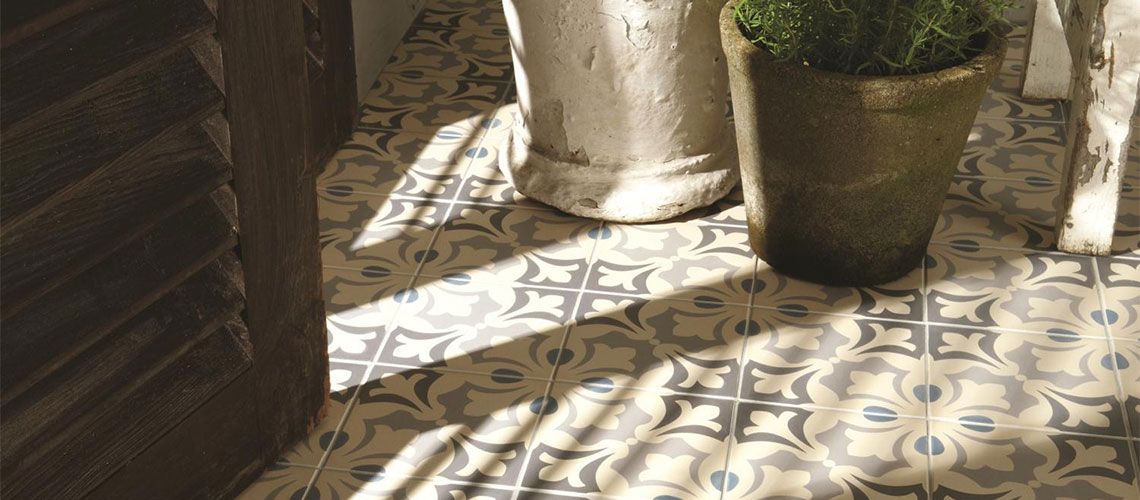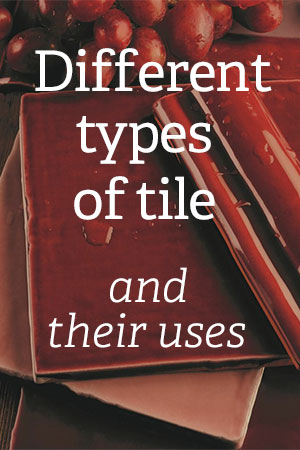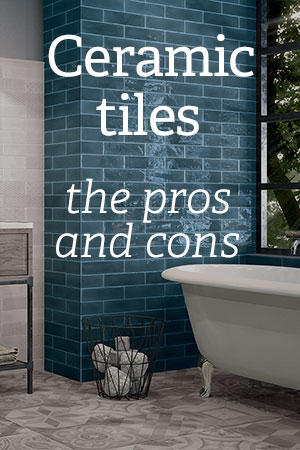We use cookies to make your experience better. To comply with the new e-Privacy directive, we need to ask for your consent to set the cookies. Our Privacy Policy
Ceramic tiles - the pros and cons
Not all tiles were created equal, as with all things, the various materials will not come without their pros and cons. In our last informative blog, we looked into the differences between ceramic, porcelain and stone tiles, let’s compare and have a look at the good, the bad and the ugly, firstly concentrating on the trusty ceramic tile.
Easy to install
Ceramic tiles are probably the most versatile and widely used type of tile. Are you one who looks for the easy option? Here’s some music to your ears: ceramic tiles are the easiest to cut and lay. Compared to other materials, ceramics are relatively lightweight. They will not exceed weight limits on most traditional tiling substrates like skimmed plaster and plasterboard so are a fool-proof option to use on the walls.
But they are not just a fabulous choice for walls, and we shouldn’t go with the discrimination thinking they are unsuitable for floors. Tiles are classified according to their strength and durability, those with a PEI (Porcelain Enamel Institute) rating of 1 to 5 can be used on floors, the higher the rating the tougher the tile. Generally, wall tiles will have a PEI rating of 0.
Pictured: Dover Acero ceramic wall tiles by Porcelanosa
Easy to maintain
Many ceramic tiles are coated with a glaze which gives them an excellent protective top layer. They are waterproof and impervious to most stains, so no need to worry about suitability for moist areas such as kitchens and bathrooms. Also, they can easily be kept squeaky clean and will not harbour bacteria – great news for any germophobes or clean freaks out there! The bad news about the glaze though, is that it can fade and discolour over time.
The un-glazed varieties will however require sealing to protect the surface from liquids and stains. The grout lines, also should be sealed to keep out any moisture which can lead to potential mould, so something to think about if you’d prefer a tile with low maintenance.
Pictured: Odyssey Rococo wall and floor ceramic tile by Original Style
Wide selection of designs
There is a wide selection of decorative design options for a ceramic tile, such as encaustic tiles, where the patterns are inlaid into the tile itself, rather than just printed onto the surface. The design will then never get lost, even when the tile is wearing down, making them amazing to use in a high traffic area.
By contrast, ceramics can also be printed to reproduce the look of many woods and stones. An obvious advantage of this is cost as they can be produced at a fraction of the price of genuine hardwood or natural stone. In fact, a ceramic tile can be one of the more affordable flooring materials, certainly less costly than its porcelain alternative.
Pictured: Armony Snow Wave ceramic tile
Cold and hard
If you are someone who feels the cold, you may not be partial to the cold feeling of a ceramic tile underfoot – carpets, vinyl floors or even laminates will probably be more suitable. If you’re suddenly feeling crestfallen, please do not despair. Ceramic tiles are a suitable material to be used with underfloor heating, which is now very popular and seen as an affordable luxury. There, now that disappointment was short-lived, wasn’t it? And on the other hand, ceramics can be quite comfortable underfoot on a hot summer day.
As for the other drawbacks, well a ceramic tile is very hard, so if installed on the floors you may find it uncomfortable if you’re standing for hours on one spot. You may need to opt for an additional rug or ensure you are wearing slippers. The hardness of the tile may also be an issue if a heavy item is dropped onto it. If the object is breakable, it’ll likely shatter. Also, the tile itself will be prone to cracking as it has no flexibility.
Not suitable for all areas
Although many ceramic tiles can be used on the floor, not all are suitable, so be sure to check the specifications before starting your job. As ceramics are not as strong as porcelain, you will not find them in the larger formats, so you may be limited for choice if you’re looking for a sleek uninterrupted look.
In general, the ceramic tile will be inferior to its porcelain equivalent as it is a cheaper alternative. One of the main differences is its water absorption rate, porcelain has a rate of 0.5% or less, whereas for ceramics the rate is as high as 4% of its own mass. The downside to this is that the joints tend to separate over time, so prone to cracks or chips. For this reason, ceramic tiles cannot be used outdoors where there will be constant temperature changes.
All in all, the ceramic tile is a winner in no end of ways and suitable for many areas in the home. But, you may prefer a porcelain tile.
Next up, we shall be putting porcelain tiles on a pedestal and looking at the highs and lows of the noble material.











